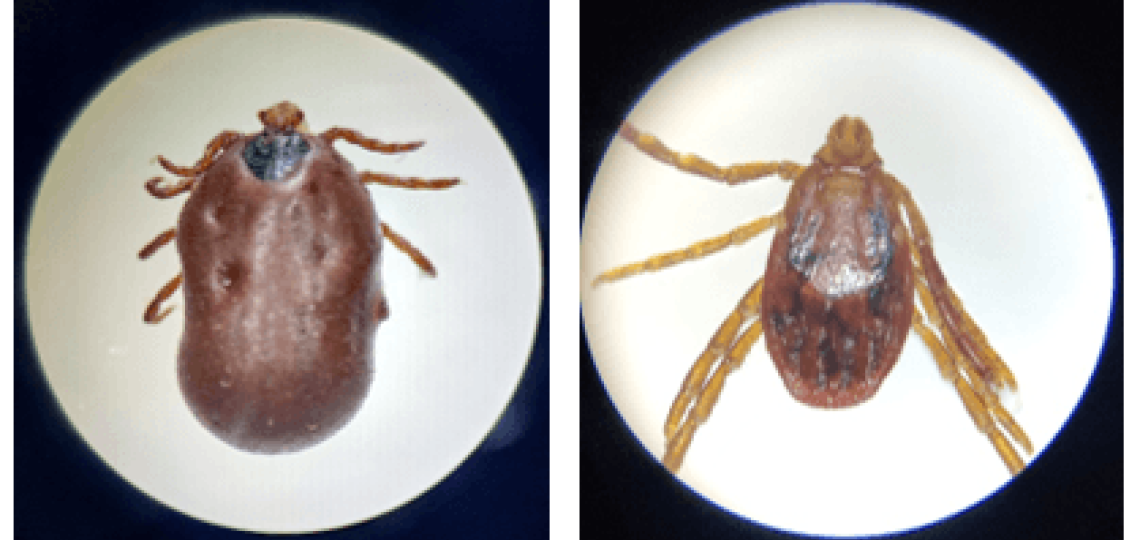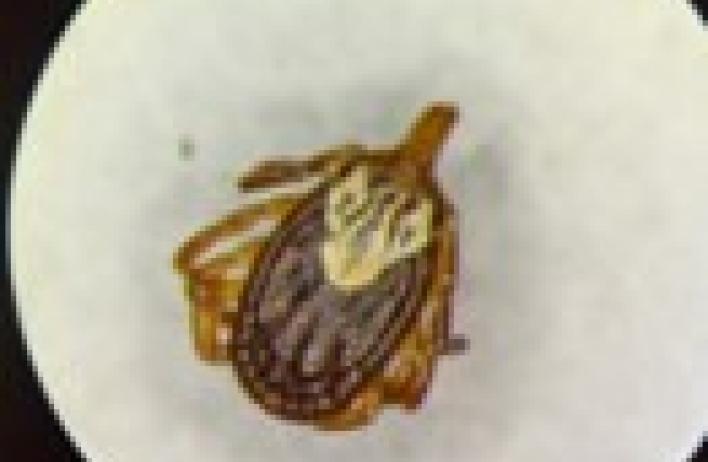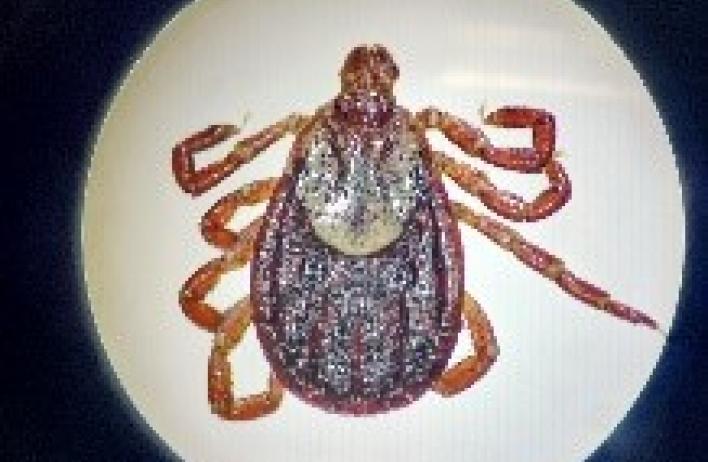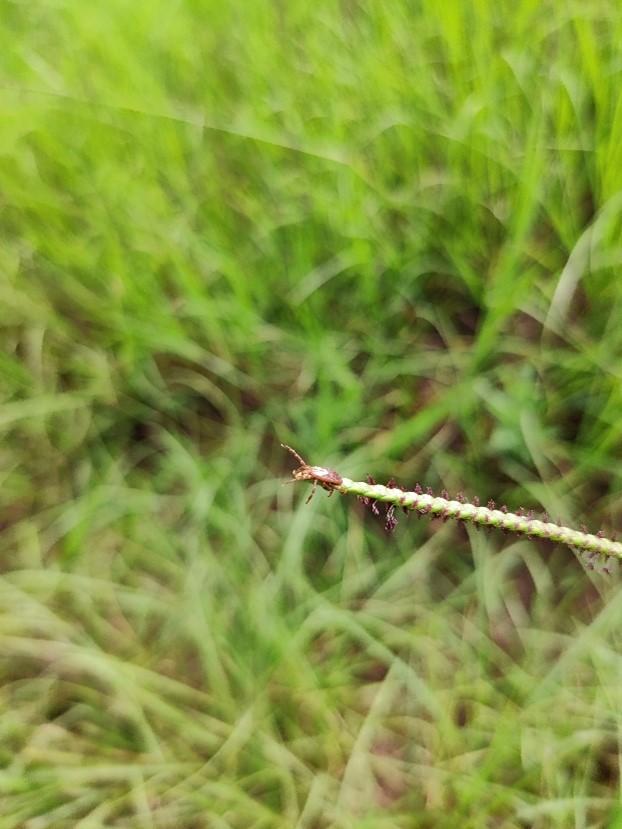We are offering free tick testing!
The National School of Tropical Medicine at Baylor College of Medicine is doing a study to determine the risk of tick-borne disease in Texas. We are asking the community to submit any ticks they find in the environment on pets, or on hunter-harvested animals for testing. We will screen the ticks for any pathogens that can cause disease in humans and will let you know the results. Tick testing through this study is free to the public. From this study, we hope to gain a better understanding of which pathogens ticks in Texas are carrying, who is at risk of coming in contact with them, and how to best prevent future cases. Please submit ticks found on humans to the Texas Department of State Health Services.
How to submit a tick for testing
Found a tick that you would like to submit for testing? Please follow the instructions below.
- Carefully place the tick in a plastic bag or small container (e.g. a pill bottle with the label removed).
- Place the container with the tick into a freezer or add alcohol to the container (cannot be rubbing or isopropyl alcohol) to kill the tick prior to mailing.
- Complete our short survey, either on paper or online. Be sure to write your name on your tick container. If your sample is not labeled, we may not be able to process it.
- Click here to download a printable version of the survey. Please include this in the same package you send your tick in.
Haga clic aquí para descargar una versión imprimible de la encuesta. Por favor incluya la encuesta en el mismo paquete en el que envía su garrapata.
- Click here to open the online survey. If using the online survey, please be sure the same name is written on the tick container and package as is used on the online survey so we will be able to send results to the correct individual.
Haga clic aquí para abrir la encuesta en línea. Si utiliza la encuesta en línea, por favor asegúrese de que en el paquete y en la encuesta figura el mismo nombre.
- Click here to download a printable version of the survey. Please include this in the same package you send your tick in.
- If you need assistance with postage costs, please email texastickproject@bcm.edu.
- Send the sample and survey by mail to:
Texas Tick Project
1102 Bates Ave, Suite 340
Houston, TX 77030
Who can send a tick?
Anyone who has found a tick in Texas! This includes ticks on animals, found outside or inside, or on people.
What if I’m not sure that what I found is a tick?
See below for how to identify a tick! If you’re still not sure, email a clear, bright photograph to texastickproject@bcm.edu with the subject line “Is this a tick?”.
How to safely remove a tick
If you find a tick attached to yourself or your companion animal, please follow these steps to safely remove it:
- Use clean, fine-tipped tweezers to grasp the tick as close to the skin’s surface as possible.
- Pull upward with steady, even pressure. Don’t twist or jerk the tick; this can cause the mouth parts to break off and remain in the skin. If this happens, remove the mouth parts with tweezers. If you cannot remove the mouth easily with tweezers, leave it alone and let the skin heal.
- After removing the tick, thoroughly clean the bite area and your hands with rubbing alcohol or soap and water. Never crush a tick with your fingers.
If you develop a rash or fever within several weeks of removing a tick, see your doctor:
- Tell the doctor about your recent tick bite,
- When the bite occurred, and
- Where you most likely acquired the tick.
Tick FAQ
What is a tick?
Ticks are arachnids, which means they are related to spiders and mites. Ticks wait on grass or bushes for animals or people to walk by, then jump on them and bite them. Here are some characteristics you can look for to know if you have found a tick:
- Eight legs*.
- No antennae
- Flat body
- Or the entire abdomen swollen and brown silver-colored

*Larval ticks, often called seed ticks, only have six legs and are incredibly tiny. Most of the time these are too small for people to notice unless they come across a recently hatched nest, which may have hundreds of larvae. Can you find the five larval ticks on the lemon poppy seed muffin below?
Not sure if it’s a tick? Take a clear, bright photo and email it to us! Use the subject line “Is this a tick?” and send to texastickproject@bcm.edu.
Is there more than one kind of tick?
Yes! While there are 84 known tick species in the United States, less than 10 of these species regularly bite humans. In Texas, there are 6 main tick species important for human health, but we do have other species as well! The following ticks are native to Texas and may carry 12 different bacterial pathogens that can infect people:
- American dog tick (Dermacentor variabilis)
- Blacklegged deer tick (Ixodes scapularis)
- Brown dog tick (Rhipicephalus sanguineus)
- Lone star tick (Amblyomma americanum)
- Amblyomma mixtum
- Gulf Coast tick (Amblyomma maculatum)




What diseases do ticks spread?
Ticks can carry a wide range of bacterial and viral pathogens that may affect people or animals. In Texas, we are concerned with the following diseases :
- Rocky mountain spotted fever
- Spotted fever group Rickettsiosis
- Ehrlichiosis
- Anaplasmosis
- Lyme disease
- Alpha-gal syndrome
How do ticks transmit disease?
Ticks transmit disease when they bite a human or animal to feed.
Once a tick finds a host it can take between 10 minutes to 2 hours to start feeding, depending on the tick species and life stage. When the tick finds a feeding spot, it holds the skin and cuts into the surface. Small amounts of saliva from the tick may also enter the skin of the host animal during the feeding process. A tick can stay attached and feeding for up to 10 days. If the tick contains a pathogen, the organism may be transmitted to the host animal in this way.
How do ticks find a meal?
Ticks rest on shrubs and bushes along paths and animal trails, waiting for an animal to walk by. Ticks can’t fly or jump but may wait on leaves or grasses with their arms up in a position called “questing”, ready to grab onto an animal walking by.
Ticks have organs that can sense movement and animals’ breath and body odors, body heat, and moisture, which help them find a host.
How can I protect myself from ticks?
Tick exposure can occur year-round. Here are some tips for preventing tick bites:
Before you go outside:
- Know where to expect ticks. Ticks live in grassy, brushy, or wooded areas, or even on animals. Spending time outside walking your dog, camping, gardening, or hunting could bring you in close contact with ticks.
- Treat clothing and gear with products containing 0.5% permethrin. Permethrin can be used to treat boots, clothing and camping gear and remain protective through several washings.
- Use repellents containing DEET, picaridin, IR3535, Oil of Lemon Eucalyptus (OLE), para-menthane-diol (PMD), or 2-undecanone. Do not use products containing OLE or PMD on children under 3 years old.
- Talk to your veterinarian about flea and tick prevention for your animals.
After you come inside:
- Check your clothing for ticks. Tumble dry clothes in a dryer on high heat for 10 minutes to kill ticks on dry clothing after you come indoors.
- Shower within two hours of coming indoors.
- Check your entire body for ticks after being outdoors.
- Check your pets for ticks. Ticks may be found anywhere on an animal, but often like soft spots such as the inside of the ears or between the toes and paw pads.








 Credit
Credit

